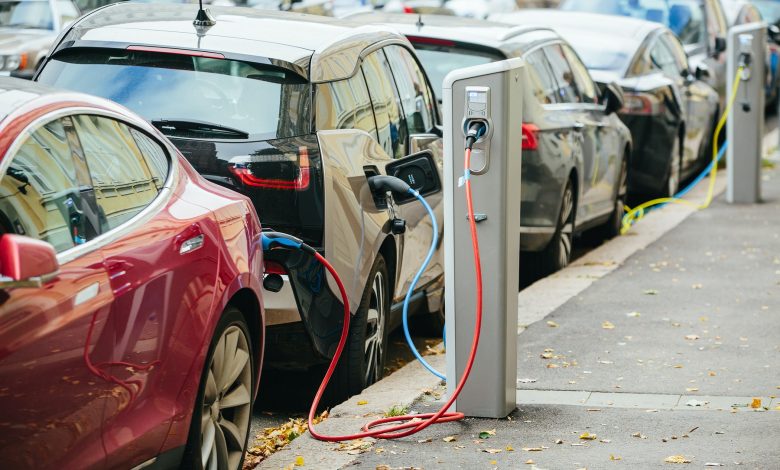Are Electric Vehicles Genuine Alternatives or Just a Gadget Fad?

Tesla is probably the most famous name when it comes to electric vehicles. The Model 3 is the biggest selling electric car ever with more than 800,000 sold by the end of 2020. The first Tesla was built back in 2003 but it took another 7 years before the company was ready to start selling. However, electric vehicles are far from being a 21st-century invention.
The very first electric car was built way back in around 1830, later in 1884, a more practical version was designed by an English inventor. In 1890, William Morrison invented what was to be the first electric vehicle with any success in the United States. Interest was sparked and now today you have the Tesla and other vehicles available.
There are many other electric vehicles and modes of transport available today but are they all real alternatives to traditional cars and bikes or are they just fads?
Why even consider electric vehicles?
Electric vehicles have long been considered as a viable alternative to using fossil fuels. There is a finite amount of oil on the planet and it has been predicted that oil will run out in 50 years, with coal following in just over 100. The drain on the earth’s resources means that humans have had to search for alternative energy sources.
It is common to see solar panels on houses, and windmills in rural areas, and now electric cars are becoming more common. Then of course there is the greenhouse effect to consider.
One study in Germany found that electric vehicles have up to 43% lower emissions than the traditional versions. Experts in the field have largely concluded that throughout an EV’s life it will emit fewer greenhouse gases and pollutants than a standard petrol or diesel vehicle. This includes production time as well as the general running of the vehicle.
What types of electric vehicles are there on the market now?
There is a growing market for alternative modes of transport now as people look for ways to live a more eco-friendly life.
Some might at first seem a bit like a toy or gadget but many owners swear by these unusual modes of transport and they all have a purpose in their own way. Some of these electric vehicles are listed here:
- Electric cars
- E-scooters
- Electric skateboards
- Electric unicycles
- Hoverboards
- Electric bicycles
So, out of the list here, how do they perform, and where could you use them? Are they for daily life or just for fun?
Electric scooters
These are part of the growing trend of micro-mobility. While there are many factors to consider when buying an electric scooter such as price and laws on where they can be used, they are becoming very popular.
Electric scooters are often used by commuters who use them in conjunction with traditional modes of transport such as trains or busses. The scooter can be folded at the stem which makes them easy to carry and also less likely to be stolen as you do not need to leave them outside.
Running on one or two motors they can travel up to 40 miles but are generally used for shorter journeys. They need little maintenance and as far as the law is concerned they are largely treated like bicycles. This means you should also treat them like bikes and consider safety equipment.
Riders should buy appropriate accessories and safety equipment as Paul Strobel suggests, such as a helmet and goggles.
Electric skateboards
This is fast becoming a phenomenon in its own right. While a lot of traditional skaters are not all so keen on these interlopers, many are starting to see the benefits of using them.
An electric skateboard is not exactly the same as a standard board. They are heavier due to the motor and are not suitable for some of the tricks that traditional ones can do. However, for cruising around they take some beating.
An electric skateboard can go over 25mph, and the top boards are advertised as being able to go 55mph on a full charge. The issue with electric skateboards is that some areas have laws against them being used on roads or paths which could limit their use. This is a shame as they can go uphill unlike a regular board!
Electric bicycles
In the 1890s, Ogden Bolton Jr was granted a patent for an electric bicycle he invented. Over a hundred years later and sales of electric bikes are surging. In the US, electric bike sales surged 145% against a rise of 65% for traditional bikes.
The rise in bike sales of both regular and electric versions could be a result of the lockdowns caused by the pandemic. People are now appreciating being outside more than ever and combined with thoughts for the environment, bicycles are the perfect solution.
Electric bicycles are a genuine form of transport and the motors can help with steep hills and traveling in a more relaxed manner when commuting. No one wants to arrive at work sweaty and hot.
Hoverboards
When hoverboards are mentioned, many people think of Back to The Future. If you are wondering how the best hoverboards work then forget about actually hovering. These are self-balancing boards with two motors, one in each wheel, and they can be used to scoot around parks and the like.
While hoverboards can be great fun you should check your local laws first as some states are clamping down on their usage even on non-road terrain.
Electric unicycles
Like hoverboards, these are self-balancing. The difference is that they have one wheel. They are so new that legislation hasn’t caught up with them and in many places, they can be used wherever bicycles are.
California has said that electric unicycles are street legal, so if you want something alternative and you live in Cali, get one of these.
Electric cars and other vehicles
Electric cars are making the biggest amount of headlines as this is the one form of transport that could be used by families or individuals daily. You could realistically travel long distances in an electric vehicle whereas a scooter would be more for rides with friends and commuting.
Last year Tesla sold 500,000 vehicles and its sales are increasing year on year, which shows that the public is starting to move away from fossil fuels. But, it isn’t just cars that are adopting electric power.
China has over 430,000 electric buses on its roads. That is 99% of the world’s electric buses. The US is severely lagging in this area with a paltry 300. If other countries followed in China’s footsteps then the public transport system could reduce its use of diesel and thus reduce emissions in general.
Summary
Every one of these electric modes of transport has its place. Electric scooters are a very practical way of reducing commuting times and traveling through cities and towns. Electric bicycles are becoming very popular and again can be used for reasonable distances.
Skateboards, hoverboards, and unicycles, all have their place too. The electric car and perhaps the bus will change the way people travel the most though. As more people switch to electric modes of transport, there will be more developments and you should see even more personal transporters on the streets.




